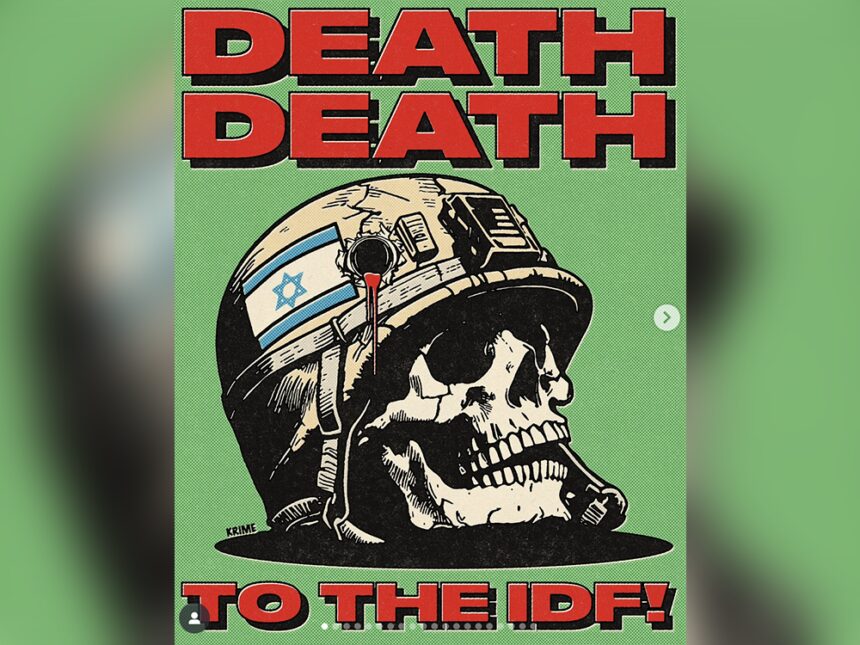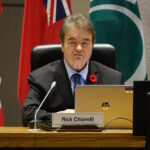I spent yesterday afternoon reviewing the case files of what’s become Toronto’s most controversial arts venue investigation in recent memory. ArtHouseTO, a downtown gallery space known for its culturally diverse programming, now finds itself caught in a legal conflict that raises profound questions about the boundaries between political expression and hate speech.
The gallery came under police scrutiny last week after displaying an artwork that contained the message “Glory to the Martyrs” alongside anti-IDF sentiment. According to documents obtained through a public records request, Toronto Police Service initiated an investigation after receiving multiple complaints that the display constituted hate speech.
“We take all allegations of hate-motivated incidents seriously,” explained Detective Sarah Ramirez of the Toronto Police Hate Crime Unit in our phone interview. “Our investigation aims to determine whether the content in question meets the legal threshold for hate speech under Section 319 of the Criminal Code.”
The Criminal Code defines hate speech as public statements that willfully promote hatred against an identifiable group. Courts have traditionally maintained a high threshold for such charges, requiring proof that communications go beyond mere offense or controversy.
Gallery director Amir Hassan expressed shock at the investigation. “This exhibition was meant to foster dialogue about ongoing global conflicts. We’ve hosted politically challenging work for years without issue,” Hassan told me during my visit to the now-temporarily closed space. “The artist’s statement clearly distinguishes between criticizing military actions and attacking any religious or ethnic group.”
I examined the exhibition catalog and confirmed the artist’s statement indeed contained disclaimers about separating criticism of military operations from broader communities. However, Toronto Police indicated they’re evaluating the full context, including social media reactions and community impact.
The case has sparked fierce debate within Toronto’s arts community. Richard Thompson, executive director of Canadian Arts Council Freedom Watch, called the investigation “a dangerous precedent” in our interview at his downtown office.
“Democratic societies must protect controversial artistic expression,” Thompson emphasized while showing me their database of similar cases. “Critical commentary about military operations, even emotionally charged language, has traditionally been protected speech in Canada.”
Legal experts I consulted offered mixed assessments. Constitutional attorney Michelle Wong pointed to R. v. Keegstra and Whatcott v. Saskatchewan Human Rights Commission as landmark cases establishing that hate speech protections apply only in extreme circumstances.
“Canadian law distinguishes between offensive speech and hatred that targets immutable characteristics of identifiable groups,” Wong explained. “Criticism of military or government actions typically falls well short of the legal threshold for hate speech prosecution.”
The Jewish Federation of Toronto expressed concerns about broader contexts. “We respect artistic freedom, but certain phrases have been weaponized in ways that make Jewish community members feel unsafe,” said community relations director David Greenblatt. “The specific wording around ‘martyrs’ carries concerning implications in the current climate.”
I reviewed Toronto Police data showing a 43% increase in reported antisemitic incidents in the past year, contextualizing the heightened sensitivity. Simultaneously, civil liberties monitoring organizations have documented increased scrutiny of Palestinian solidarity expressions.
The Canadian Civil Liberties Association issued a statement yesterday warning against “overpolicing of political expression.” Their analysis suggests similar investigations have rarely resulted in charges but often create what they term “chilling effects” on artistic and political discourse.
After examining the artwork in question through photographs provided by the gallery, I noted the piece included documentary-style imagery alongside the controversial text. The multidimensional installation presented perspectives from civilians affected by recent conflicts rather than focusing solely on military criticism.
Toronto Police Service confirmed their investigation remains active but declined to provide a timeline for completion. Meanwhile, ArtHouseTO has postponed three upcoming exhibitions while seeking legal guidance.
“We’re working with the artists to ensure their voices aren’t silenced while navigating this process responsibly,” Hassan added. The gallery has received offers of pro bono representation from three civil liberties organizations.
Professor Ellen Richardson, who teaches art and censorship at OCAD University, provided historical context for the case. “Canada has navigated similar tensions between protecting communities from harmful speech while preserving artistic freedom. The courts have generally maintained a high bar for criminal prosecution of artistic expression.”
Public response has been equally divided. When I visited the neighborhood surrounding ArtHouseTO, I encountered both protesters demanding the gallery’s closure and supporters holding silent vigils for artistic freedom. Social media analyses show similarly polarized reactions, with hashtags both supporting and condemning the gallery trending locally.
As Toronto navigates this complex intersection of artistic expression, community sensitivity, and legal boundaries, the case highlights how cultural institutions increasingly find themselves at the frontlines of broader societal tensions. Whether ArtHouseTO becomes a precedent-setting case or simply another chapter in ongoing debates about the limits of expression remains to be seen.
For now, the gallery’s windows remain covered with paper, the exhibition suspended in a legal limbo that reflects Canada’s ongoing struggle to balance competing values in an increasingly polarized world.






